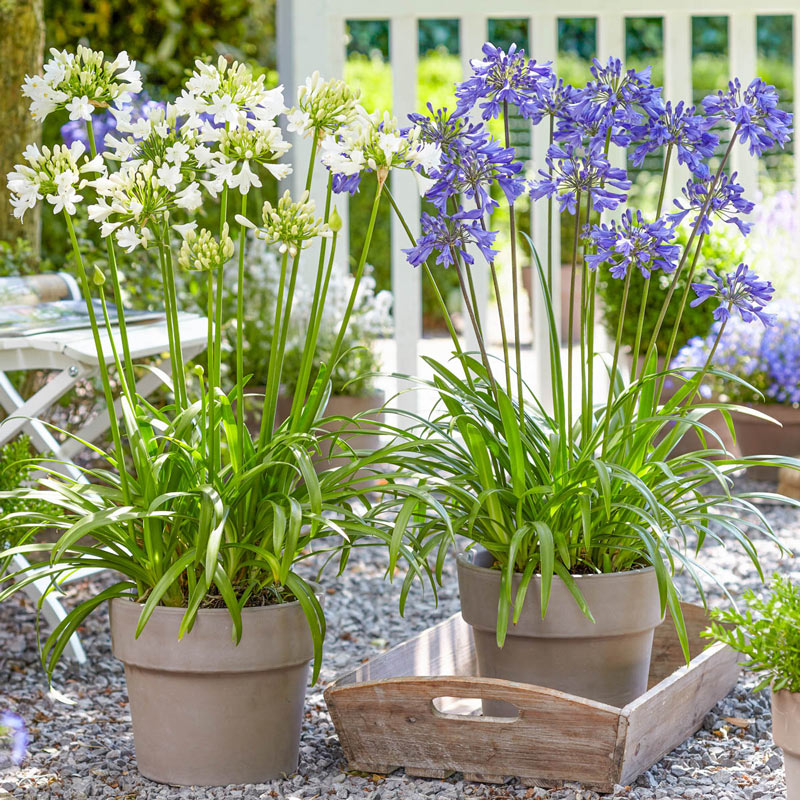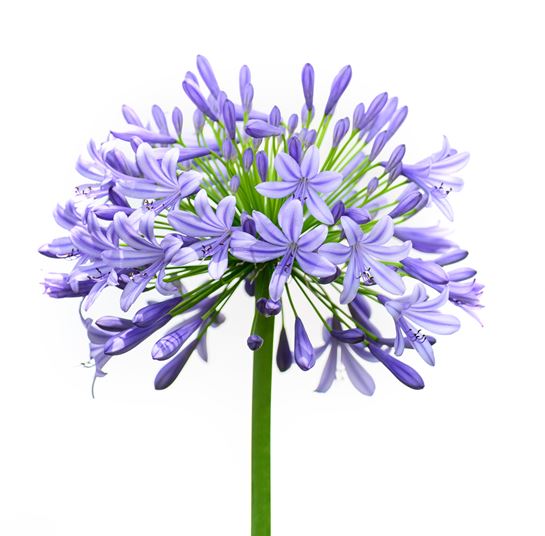Agapanthus Breeding: Tips for Expanding Your Plant Collection
Agapanthus Breeding: Tips for Expanding Your Plant Collection
Blog Article
Releasing the Secret to Effective Agapanthus Growing: Idea for a Flourishing Garden
In the world of gardening, growing agapanthus successfully requires a calculated method that encompasses different facets of plant treatment. With cautious focus to detail, one can open the secrets to nurturing these magnificent flowers, resulting in a yard that grows with charm and vibrancy. By comprehending the nuances of agapanthus farming, one can create a setting where these plants thrive and flower generously. In the following discussion, we will certainly explore necessary tips and techniques that will certainly lead you towards a growing agapanthus yard, offering insights right into best methods, soil problems, sprinkling techniques, and much more.
Growing Agapanthus: Ideal Practices
When planting Agapanthus, proper dirt prep work is important for making sure effective development and development of these lovely blossoms. Agapanthus, generally referred to as Lily of the Nile or African lily, thrives in well-draining soil with a slightly acidic to neutral pH degree - Agapanthus. Before growing, it is vital to modify hefty clay soils with raw material such as compost or peat moss to boost drainage and give vital nutrients for the plants
To grow Agapanthus, select an area that obtains complete sunlight to partial color, as this will advertise healthy and balanced development and bountiful blooming. Dig a hole twice the diameter of the plant's origin round and place the Agapanthus at the same depth it was formerly growing. Gently backfill the opening with soil, weighing down firmly to remove any air pockets around the origins.
Water the recently grown Agapanthus thoroughly and remain to keep the dirt evenly wet, especially throughout the plant's energetic expanding season. Agapanthus. Using a well balanced plant food once a month can additionally support the plant's development and flowering. By complying with these best methods for growing Agapanthus, you can develop a spectacular display of these captivating blossoms in your garden
Perfect Dirt Conditions for Agapanthus
For optimal development and growing success of Agapanthus plants, making certain the dirt conditions are perfect is essential. Agapanthus thrives in well-draining dirt with a slightly acidic to neutral pH level ranging from 6.0 to 7.0. This type of soil permits for appropriate water drainage, protecting against waterlogging which can cause root rot. To enhance soil water drainage, take into consideration adding organic matter such as garden compost or peat moss when preparing the planting site. In addition, Agapanthus chooses dirt that is rich in nutrients, so including a balanced plant food during the expanding period can advertise healthy development and dynamic blooms.

Watering and Feeding Tips
To make certain healthy and balanced growth and lively flowers, appropriate watering and feeding methods are vital for successful Agapanthus farming. Agapanthus plants benefit from routine watering, especially throughout the expanding season. It is advised to water deeply once a week, making sure the soil is moist however not soaked. Throughout warm weather condition or in pots, even more constant watering may be essential to stop the soil from drying totally.
When it pertains to feeding Agapanthus, a well balanced plant food with equal components nitrogen, phosphorus, and potassium can be applied in the springtime to advertise healthy and balanced development and blooming. Slow-release fertilizers are perfect for providing nutrients slowly over an extended duration. Stay clear of over-fertilizing, as this can cause extreme foliage development at the cost of blooms.
In more helpful hints addition, including natural issue like compost right into the dirt can enhance nutrient degrees and enhance soil framework, aiding in the total health of the Agapanthus plants. By following these watering and feeding tips, garden enthusiasts can ensure their Agapanthus plants grow and generate magnificent display screens of flowers.
Pruning and Deadheading Techniques
Correct trimming and deadheading techniques play a vital duty in keeping the health and wellness and visual appeals of Agapanthus plants, complementing the necessary practices of watering and feeding for successful growing. Trimming Agapanthus involves eliminating spent flower heads, dead or yellowing leaves, and total shaping of the plant to promote far better development. Deadheading, the procedure of removing faded blossoms, not only boosts the plant's look however also urges further blooming.
When deadheading Agapanthus, it is advisable to snip off the blossom stem at the base utilizing sharp, clean shears. This procedure redirects the plant's power from seed manufacturing back right into root and vegetation find this growth, promoting a healthier and extra robust plant. Regular deadheading can prolong the growing duration of Agapanthus and stop self-seeding, which can cause congestion.
In regards to trimming, Agapanthus typically advantages from a light trim after blossoming to clean the plant and encourage fresh growth. Reducing the invested blossom stems and getting rid of any type of damaged or dead vegetation assists preserve the plant's vigor and overall look. Nevertheless, it is necessary to avoid reducing right into the crown of the plant, as this can damage its wellness.

Protecting Agapanthus From Pests and Diseases
Applying effective bug and condition administration techniques is vital to safeguarding the wellness and vitality of Agapanthus plants in farming. One typical parasite that influences Agapanthus is the Agapanthus borer, a caterpillar that tunnels into the plant, causing damages to the flowers and fallen leaves.
Along with bugs, Agapanthus are vulnerable to conditions such as root rot and fungal leaf spots. These issues can frequently be avoided by ensuring correct water drainage and preventing overwatering. Affected parts of the plant ought to be promptly eliminated to prevent more spread if indicators of disease appear. Fungicides may likewise be used as a treatment measure, complying with the producer's directions carefully. By remaining alert and attending to insect and disease concerns without delay, garden enthusiasts can aid their Agapanthus flourish and grow.

Final Thought
Finally, successful farming of agapanthus requires correct growing methods, optimal soil problems, ample watering and fertilizing, normal trimming and deadheading, and defense from conditions and insects. By adhering to these ideas and techniques, gardeners can guarantee a prospering garden loaded with attractive agapanthus flowers. Agapanthus. Keep in mind to maintain constant treatment and focus to detail to advertise the health and wellness and long life of these magnificent plants
When growing Agapanthus, proper dirt preparation is vital for making certain successful growth and growth of these gorgeous blossoms.Water the freshly planted Agapanthus extensively and continue to keep the dirt uniformly wet, specifically during the plant's energetic growing period.For ideal development and growing success of Agapanthus plants, guaranteeing the dirt conditions are optimal is essential. When transplanting or planting Agapanthus, make sure the dirt is well-prepared to offer the required foundation for the plants to develop themselves efficiently. One usual pest that influences Agapanthus is the Agapanthus borer, a caterpillar that tunnels right into the plant, creating damage to go to my blog the fallen leaves and blossoms.
Report this page